It looks like you're using an Ad Blocker.
Please white-list or disable AboveTopSecret.com in your ad-blocking tool.
Thank you.
Some features of ATS will be disabled while you continue to use an ad-blocker.
share:
Hello everybody! Some time ago I started a discussion in a thread related to Apollo missions about what color the Moon surface is. Several photos
appeared in that thread, which showed that the Moon is possibly not gray, but tan-colored. Many of the photos were later found to be not true
full-color, but reconstructed from monochromatic shots at wavelengths not linked to human vision. So, basically, the notion that the Moon is not
silver-gray, but has a brownish tint, was put aside. Now we have this new photo from the Chinese Jade Rabbit probe:
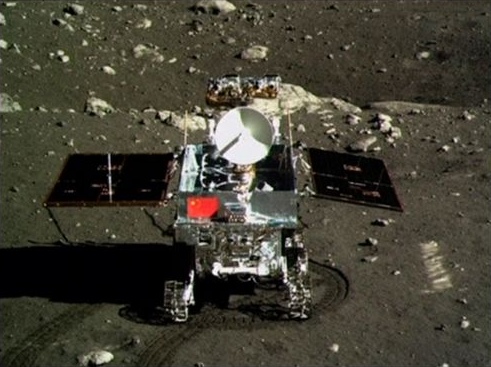
Looks like the Moon surface is actually light-brown with stones scattered around having obviously different, lighter color. Maybe this is the first time we can really have an independent close look at the moon surface in color. Interesting how other JR photos will correlate with what we believed about the Moon landscape till now.
Just for comparison, this is the previously posted Kaguya picture of the Moon. Color is obviously noticeable:
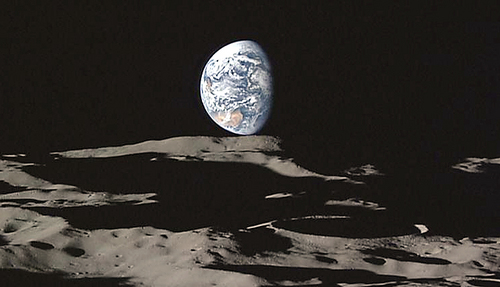
And this is Clementine color photo of the Archimedes crater. Even if we take into account different saturation level, the hues are very informative:
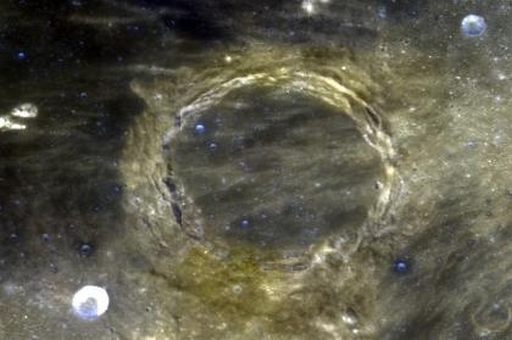
For comparison, this is a random Apollo photo:
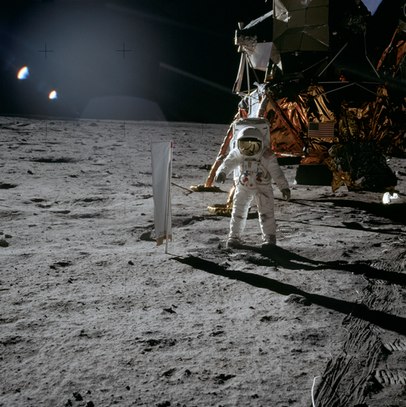

Looks like the Moon surface is actually light-brown with stones scattered around having obviously different, lighter color. Maybe this is the first time we can really have an independent close look at the moon surface in color. Interesting how other JR photos will correlate with what we believed about the Moon landscape till now.
Just for comparison, this is the previously posted Kaguya picture of the Moon. Color is obviously noticeable:

And this is Clementine color photo of the Archimedes crater. Even if we take into account different saturation level, the hues are very informative:

For comparison, this is a random Apollo photo:

edit on 16-12-2013 by mrkeen because: (no reason given)
IT'S A CONSPIRACY!!! I mean the moon doesn't shine white because it's reflecting the sun....
So all images suggest that it's a dirty sandy grey.
Was it supposed to be pink?
Was it supposed to be pink?
reply to post by mrkeen
The white stones are evidently a very different color than their surroundings. They do not blend in, or even approximate the color, they are white and the ground isn't. An ATS geologist should be around shortly to set you straight though - for everything on the moon is supposed to be a whiter shade of pale (then again, the stones are reflecting more light and look whiter than the little-less reflective dust/ground).
The white stones are evidently a very different color than their surroundings. They do not blend in, or even approximate the color, they are white and the ground isn't. An ATS geologist should be around shortly to set you straight though - for everything on the moon is supposed to be a whiter shade of pale (then again, the stones are reflecting more light and look whiter than the little-less reflective dust/ground).
edit on 16-12-2013 by Aleister because: (no reason given)
edit on 16-12-2013 by Aleister because: (no reason given)
Give it a few months an people will have a larger collection of new photos to compare with Apollos. For me personally I don't care what the moon
colour is, I want to know the colours and material of the megaliths up there
NOTE: color/colour, which ones correct? lol
NOTE: color/colour, which ones correct? lol
skyblueworld
Give it a few months an people will have a larger collection of new photos to compare with Apollos. For me personally I don't care what the moon colour is, I want to know the colours and material of the megaliths up there
NOTE: color/colour, which ones correct? lol
Well if you want real English it's colour .. Only Americans can be lazy and lose the U. Just kidding!! I mean that jokingly
I've always assumed the moon was always a dirty grey colour I can't explain why the rocks look different but as long as it keeps shining bright that's all that matters
From around the net, a mosaic of random bits of moon images.
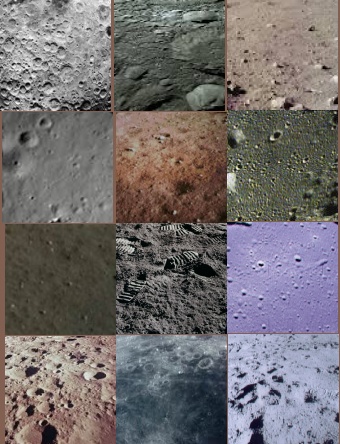
I think they tell a story about the imaging and photo reproduction equipment, than the actual color of the moon.

I think they tell a story about the imaging and photo reproduction equipment, than the actual color of the moon.
reply to post by mrkeen
I am excited! I hope there will be a ton to see without blurry pictures.
This shows the landing it made me dizzy really cool!
www.telegraph.co.uk...
I am excited! I hope there will be a ton to see without blurry pictures.
This shows the landing it made me dizzy really cool!
www.telegraph.co.uk...
skyblueworld
Give it a few months an people will have a larger collection of new photos to compare with Apollos. For me personally I don't care what the moon colour is, I want to know the colours and material of the megaliths up there
The subtle colors of the Moon are varied in the Apollo pictures, so I suppose we will see a variety of hues from this Chinese mission, too.
Looks pretty brown in this video taken what 40 some years ago now?
Oh yeah and the famous ORANGE
Oh yeah and the famous ORANGE
Let me look up in the sky with my own two eyeballs. Hmm... Looks mostly whitish/gray from where I'm standing. Does it really matter what color it
would be if I was 50 miles above it, or standing on its surface? Because that's never going to happen!
Blue Shift
Let me look up in the sky with my own two eyeballs. Hmm... Looks mostly whitish/gray from where I'm standing. Does it really matter what color it would be if I was 50 miles above it, or standing on its surface? Because that's never going to happen!
It matters it could cost you when go to play who wants to be a million air.
But seriously what color is it?
reply to post by abeverage
So where did they land, do you think they will tell the world when they discover we were never there lol...
Look forward to more pics. They can put rover on moon but can't breathe the air in bejing lol go figure....
The Bot
So where did they land, do you think they will tell the world when they discover we were never there lol...
Look forward to more pics. They can put rover on moon but can't breathe the air in bejing lol go figure....
The Bot
reply to post by dlbott
They did not land near any of the Apollo sites. The closest man-made object to where they landed (although still quite a distance away) is the Russian Luna17/Lunakhod 1 rover. The nearest Apollo site (Apollo 15) is a few hundred km away:
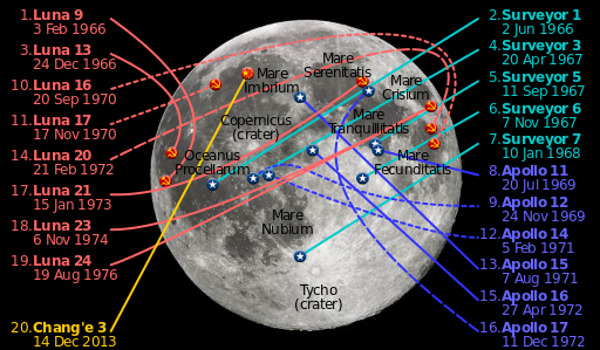
Image Source
They did not land near any of the Apollo sites. The closest man-made object to where they landed (although still quite a distance away) is the Russian Luna17/Lunakhod 1 rover. The nearest Apollo site (Apollo 15) is a few hundred km away:

Image Source
edit on 12/16/2013 by Soylent Green Is People because: (no reason given)
What makes you think the Lunar surface would be the same color everywhere? Do you think that maybe lighting conditions might affect it in any way?
And what difference does it make anyway?
Here's some interesting terrain.
www.fantom-xp.com...
And what difference does it make anyway?
Here's some interesting terrain.
www.fantom-xp.com...
Colour (or colours) of the Moon is one of my favourite topics, so I'll post information I gathered here gladly. (I'm gonna have to shoot off to work
in a bit, so just a short post now)
Overall, the Moon is grey, with subtle hues depending on local mineral composition. It isn't predominantly brown or tan like seen in some images and claimed in some conspiracy videos. A lot of times, colouration is due to the imaging/photographic processing and reproduction.
The two predominant colours of the Moon are blueish (in iron-rich, titanium-rich areas) and reddish (in iron-rich, titanium-poor areas). The best place where it is seen is the border between mare Tranquilitatis and Serenitatis: www.space.com...
The bluish colour of mare Tranquilitatis is even visible through good binoculars. With a telescope, you can see reddish/bluish colouration in other places too, such as the Aristarchus crater and surrounding area. Here's a great colour image of the Moon:
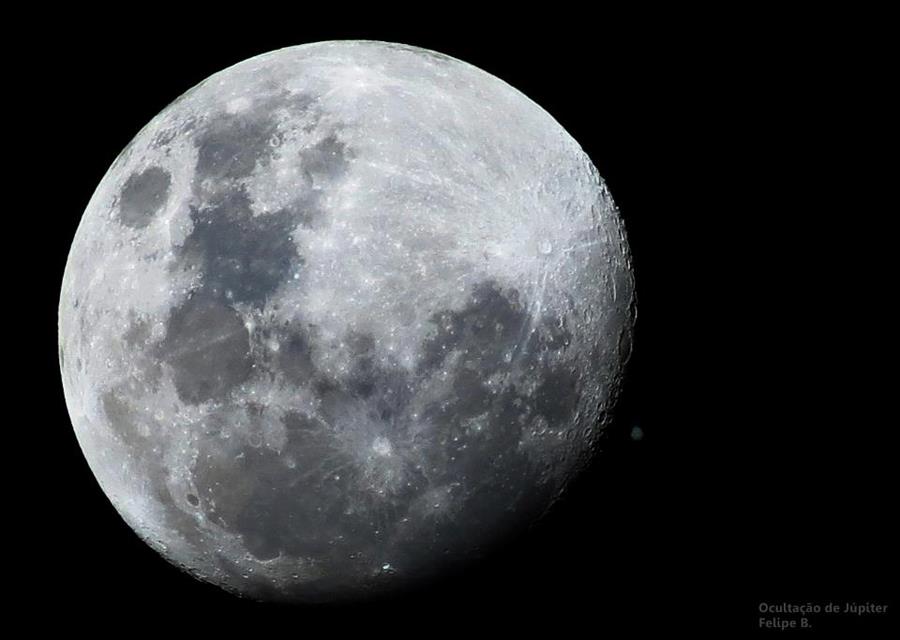
Here's a photo of the moon with colours enhanced:

Source: www.datarescue.com...
A great article on colours of the Moon, including many Apollo images. the-moon.wikispaces.com...
Overall, the Moon is grey, with subtle hues depending on local mineral composition. It isn't predominantly brown or tan like seen in some images and claimed in some conspiracy videos. A lot of times, colouration is due to the imaging/photographic processing and reproduction.
The two predominant colours of the Moon are blueish (in iron-rich, titanium-rich areas) and reddish (in iron-rich, titanium-poor areas). The best place where it is seen is the border between mare Tranquilitatis and Serenitatis: www.space.com...
The bluish colour of mare Tranquilitatis is even visible through good binoculars. With a telescope, you can see reddish/bluish colouration in other places too, such as the Aristarchus crater and surrounding area. Here's a great colour image of the Moon:

Here's a photo of the moon with colours enhanced:

Source: www.datarescue.com...
A great article on colours of the Moon, including many Apollo images. the-moon.wikispaces.com...
edit on 17-12-2013 by wildespace because: (no reason given)
Here's a colour photo of the The Aristarchus Plateau, by Russell Croman
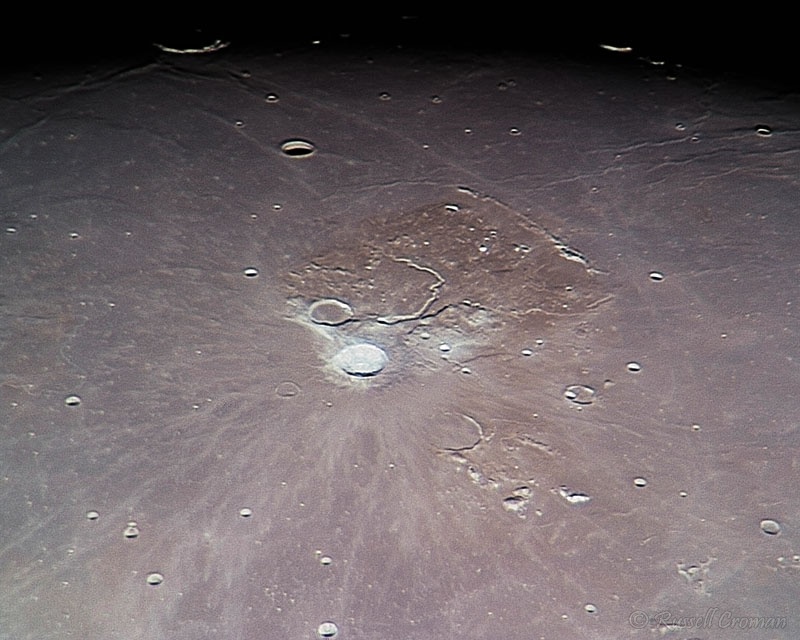
I've read that you can see this brown colouration through a telescope with your own eyes. The basaltic plains around the plateau are bluish, thanks to titanium-rich minerals.
Here it is in a wider context (www.astronomie.be...)
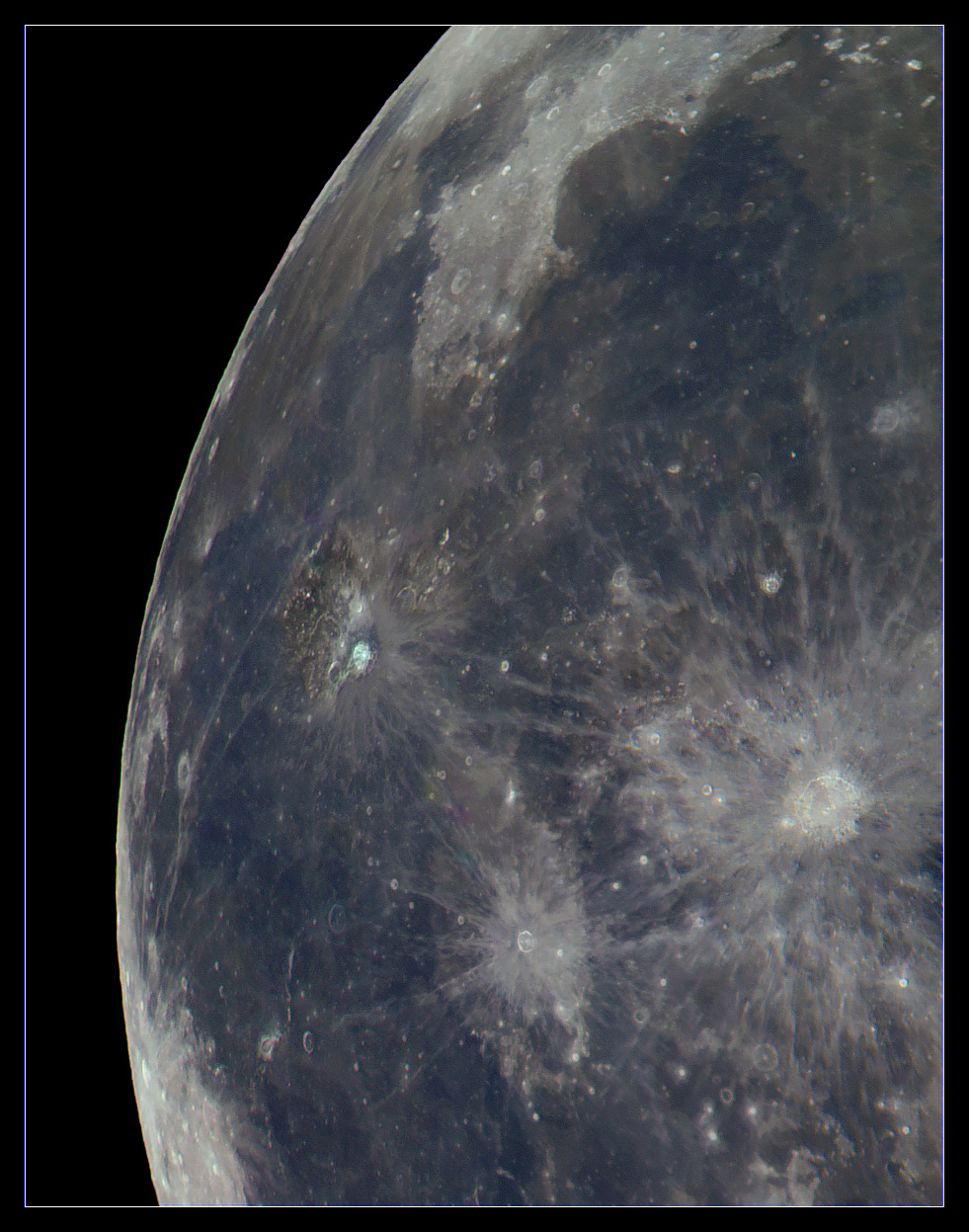

Normally, we think of the moon as fairly colorless, especially in comparison to the Earth. But the moon is not entirely without color, as this image of the Aristarchus Plateau region shows. The plateau itself is the roughly rectangular brownish region at the center of the picture. It is punctuated by the bright young crater Aristarchus, and the older, lava-filled crater Herodotus. The feature starting to the right of Herodotus and meandering across the plateau is Schroter's Valley, possibly a collapsed lava tube or ancient lava flow. The plateau apparently gets its color from an iron-rich material spewed out onto it by volcanic activity.
I've read that you can see this brown colouration through a telescope with your own eyes. The basaltic plains around the plateau are bluish, thanks to titanium-rich minerals.
Here it is in a wider context (www.astronomie.be...)

new topics
-
Don't cry do Cryo instead
General Chit Chat: 4 hours ago -
Tariffs all around, Except for ...
Predictions & Prophecies: 6 hours ago -
Gen Flynn's Sister and her cohort blow the whistle on DHS/CBP involvement in child trafficking.
Whistle Blowers and Leaked Documents: 10 hours ago
top topics
-
Trump sues media outlets -- 10 Billion Dollar lawsuit
US Political Madness: 16 hours ago, 25 flags -
Bucks County commissioners vote to count illegal ballots in Pennsylvania recount
2024 Elections: 15 hours ago, 23 flags -
Fired fema employee speaks.
US Political Madness: 17 hours ago, 10 flags -
Gen Flynn's Sister and her cohort blow the whistle on DHS/CBP involvement in child trafficking.
Whistle Blowers and Leaked Documents: 10 hours ago, 8 flags -
Don't cry do Cryo instead
General Chit Chat: 4 hours ago, 4 flags -
Anybody else using Pomodoro time management technique?
General Chit Chat: 13 hours ago, 3 flags -
Tariffs all around, Except for ...
Predictions & Prophecies: 6 hours ago, 3 flags
active topics
-
Tariffs all around, Except for ...
Predictions & Prophecies • 11 • : Dalamax -
How can you defend yourself when the police will not tell you what you did?
Posse Comitatus • 84 • : bastion -
Oligarchy It Is Then
Short Stories • 14 • : UKTruth -
Don't cry do Cryo instead
General Chit Chat • 1 • : angelchemuel -
Mike Tyson returns 11-15-24
World Sports • 54 • : angelchemuel -
President-Elect DONALD TRUMP's 2nd-Term Administration Takes Shape.
Political Ideology • 205 • : WeMustCare -
On Nov. 5th 2024 - AMERICANS Prevented the Complete Destruction of America from Within.
2024 Elections • 155 • : WeMustCare -
The Trump effect 6 days after 2024 election
2024 Elections • 143 • : cherokeetroy -
Bucks County commissioners vote to count illegal ballots in Pennsylvania recount
2024 Elections • 21 • : Irishhaf -
60s-70s Psychedelia
Music • 54 • : gort69
